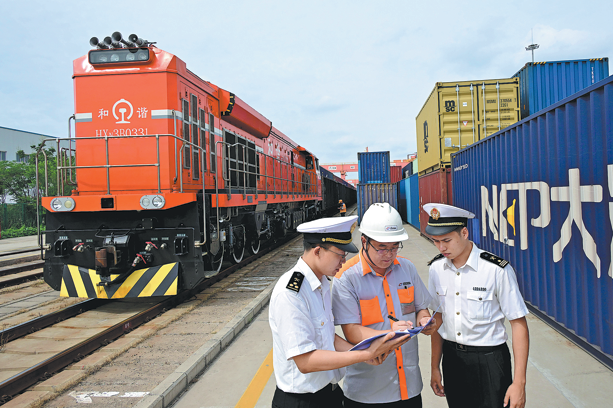A good idea that won't work

The proposed integration of Baoding with neighboring Beijing and Tianjin faces huge hurdles
The city of Baoding, 150 kilometers south of Beijing, is a mirror of many deeply entrenched problems in the Chinese economy.
At a time when housing sales, if not the general level of housing prices, are on the decline in many cities, recently Baoding's housing prices reportedly rose by an amazing 20 percent in only six days.
That jump in price had nothing to do with local business, as Baoding is a small city of about 1 million people. The sudden change came because the city's geographic proximity to Beijing was recently "rediscovered", leading to Baoding's inclusion as one of the cities in a grand government strategy to promote the business integration of Beijing, Tianjin (one of North China's key port cities, 130 km southeast of the capital) and surrounding Hebei province.
Integration is easier to say than do. So far, Baoding can offer little to Beijing, a city of more than 20 million residents with almost 2 trillion yuan ($323 billion; 234 billion euros) GDP, or 93,000 yuan per capita.
By comparison, in a broader definition (commonly used in China, to place a number of nearby counties and smaller cities under the jurisdiction of a larger city), Baoding is an area that covers five cities and 18 counties, with a population of 11 million and about 300 billion yuan in GDP. So Baoding's per capita GDP would be less than 30,000 yuan.

A less expensive region would presumably enjoy a lot of opportunities in working with a large and rapidly developing city such as Beijing that is increasingly constrained by its expensive cost of living, especially the prohibitive housing prices for its young professionals.
Unfortunately, this is not happening. Even though the two cities are connected by high-speed trains, the railway stations at either end are poorly connected to intra-city rail lines and other public transit systems. This is largely due to the city governments' inability to coordinate different industrial bureaucracies.
Despite Baoding's housing prices being about one-third of Beijing's, it is hard to imagine many office workers would be willing to commute 300 km to and from Beijing each day, spending almost as much time struggling from one mode of transport to another as they would in their offices.
Poor connectivity reveals how badly Chinese cities are prepared for sharing resources and working more closely together. It is a very simple question: If all the cities are still so inadequate in managing their own public services, how can they be expected to extend their services to people in other places?
It also underlines the fact that Beijing and Baoding are separated by far more factors than just distance - and this applies to many similar pairs of cities all over China. The near hysterical spending on building new assets in the past few years has not resulted in more efficient use of resources.
In fact, the province of Hebei, where Baoding is but one city, represents on a larger scale the contradictions between what China is and what it wants to be.
For more than 30 years of China's reform and opening-up, industrial productivity in Hebei, as in all other Chinese provinces, skyrocketed. However, it has never raised the level of its services to the standard seen in the two world-class cities it surrounds.
So much effort was devoted to building up the province's traditional industrial base that Hebei's annual steel output (about 200 million tons) is equivalent to that of the United States and Japan combined - not to mention all the coal that is burned to achieve such awesome records and the environmental disaster that has caused.
The province managed to develop into an example of the nation's industrial overcapacity and was recently ordered by the central government to reduce its steel-making capacity by 60 million tons.
Had Hebei's officials diverted just a small share of the money claimed by all the wasteful and pollutant steel mills to upgrading their cities' public services, they could long ago have attracted more residents to its cities that are close to Beijing.
But since all signs suggest that the province's entire economic structure is still based on the old planned economy and that its officials are still obsessed with building rather than improving services, why would any rational investor rush to buy up Baoding's previously unsold apartments?
Having said this, one tends to think that for the proposed Beijing-Tianjin-Hebei business integration to make any genuine progress, many officials will have to abandon their old development strategy along with the province's many wasteful, unprofitable steel mills.
The author is editor-at-large of China Daily. Contact the writer at edzhang@chinadaily.com.cn
(China Daily Africa Weekly 04/04/2014 page13)
Today's Top News
- CPC holds symposium to commemorate 110th birth anniversary of Hu Yaobang
- Economy seen on steady track
- Trade-in program likely to continue next year
- Li: SCO can play bigger role in governance
- Huangyan Island protection lifeline for coral ecosystem
- Latin America urgently needs green credit






























